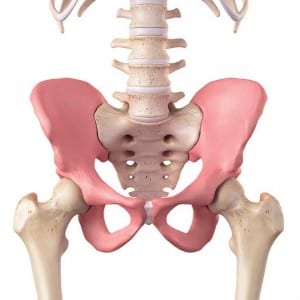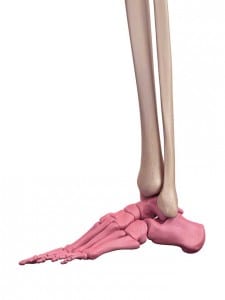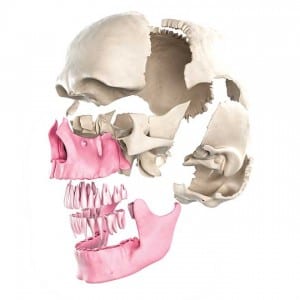We might feel 20 on the inside, but outside–in that unforgiving morning mirror—it’s quite a different story. First, those sneaky silver hairs. Next, those lines about the eyes. And let’s not even mention the aches and pains in the joints. Age, it’s true, can wither us, but with a little planning and the right care, the unwelcome effects of time can be managed. See why the experts say we can age gracefully.
joints
Not only do our longer lives mean more wear and tear, but we boomers don’t put up with things—we don’t want our joints to ache, we don’t want our movement compromised. “People want results now,” says Dr. Robert Sciortino, an orthopedic surgeon with a private practice at St. Luke’s Hospital, who explains that hip problems usually are caused by osteoarthritis. Signs include stiffness, loss of movement, and pain in the groin, upper thigh or buttocks made worse by walking. Because of rotation, a person may have a hard time tying their shoes. But Sciortino says advances in materials and techniques are m aking a big difference. He says one particular procedure, SuperPath, is changing the face of hip surgery because it is minimally invasive and doesn’t involve dislocation and the cutting of all ligaments. The artificial hips also are now made of stronger, newer plastics and metals that last longer. (Sciortino notes that there is already a 90 to 95 percent survival rate of hips replaced 15 years ago.) There also is less risk of infection, blood loss, clots and nerve damage now. Recovery is faster, too.
aking a big difference. He says one particular procedure, SuperPath, is changing the face of hip surgery because it is minimally invasive and doesn’t involve dislocation and the cutting of all ligaments. The artificial hips also are now made of stronger, newer plastics and metals that last longer. (Sciortino notes that there is already a 90 to 95 percent survival rate of hips replaced 15 years ago.) There also is less risk of infection, blood loss, clots and nerve damage now. Recovery is faster, too.
Sciortino points out, too, that there are alternatives to surgery. Anti-inflammatory medications, cortisone injections and using a cane all can be effective ways to reduce discomfort. Although some people believe in plasma and stem cell injections, Sciortino says there is no scientific data to support their efficacy, nor are they covered by insurance. “It’s a lot of dough to pay for something that’s not proven,” he says.
Ankles also are at risk: gouty arthritis is a condition that impacts joints, most commonly big toes, elbows, wrists and fingers. According to WebMD, the chances of having gout—caused by the buildup of uric acid crystals in the joints and more usual in men than women—increase with age, peaking at 75. Signs include sudden attacks of intense pain, tenderness and swelling, or a reddening (or purpling) of the affected area. Because gout is thought to be mainly diet related, the Mayo Clinic recommends limiting meat, seafood, alcohol (especially beer) and beverages sweetened with fruit sugar, which promote the production of uric acid. Obesity, family history, diabetes and high blood pressure also are thought to be risk factors.
feet
“Where to begin?” says podiatrist Dr. Thomas Sehy of Page Foot and Ankle, when asked about the ways in which our feet age. He cites swelling as one of the most common symptoms and explains that weakened circulation and gravity tend to pull fluid down. “Aging vessels have to work harder to bring blood back up to the heart,” he says, adding that this especially can be true for people with hypertension and varicose veins. Although swelling becomes more common with age, he says he has seen 95-year-olds with none at all. Women in particular are prone to swollen feet because of things like pregnancy and tight shoes, Sehy says, adding that it’s also possible they notice it more because their feet often are exposed.
 Footwear, he says, is at the root of other complaints as well: corns and calluses—often caused by a lifetime of wearing pointy, too-tight shoes—are common in older people. A corn, Sehy explains, is a callus on top of or between the toes, while a callus grows underneath the foot. Both are tough areas of dead skin and can, he says, be cut away with a simple razor. He suggests that if a person is shown how, and is healthy (no diabetes, hand weakness or failing eyesight), they can remove the dead skin themselves. “It doesn’t hurt unless you cut too deep,” he says, adding that a pumice stone
Footwear, he says, is at the root of other complaints as well: corns and calluses—often caused by a lifetime of wearing pointy, too-tight shoes—are common in older people. A corn, Sehy explains, is a callus on top of or between the toes, while a callus grows underneath the foot. Both are tough areas of dead skin and can, he says, be cut away with a simple razor. He suggests that if a person is shown how, and is healthy (no diabetes, hand weakness or failing eyesight), they can remove the dead skin themselves. “It doesn’t hurt unless you cut too deep,” he says, adding that a pumice stone
also can be used.
Dr. Michael Horwitz, podiatric surgeon and director of Feet for Life Podiatry, says commonly prescribed supportive shoes or inserts are particularly detrimental for fallen arches, another condition that can happen over time, usually to people predisposed to flat feet. “Unless you’re rocking-chair old, over-support is not a good idea. Feet need to move,” Horwitz says, adding that some support is OK providing it is counterbalanced with walking barefoot, wearing a flexible shoe and stretching out tightened ligaments. Longtime wear of high heels also can be to blame. “They cause damage to the arch because the Achilles tendon tightens up,” Horwitz explains. Men suffer, too, he says, because of over-stiff work boots with chunky heels. “The same applies to feet as to the whole body: they must be put through a full range of motion,” he stresses.
Thick, horny nails also come to mind when we think of aging feet, although the common cause—fungus—can occur at any time. “The infecting fungus [which prefers moist, dark, warm environments] tends to progress slowly, damaging the nail to a greater and greater degree,” Horwitz explains. “The results can be nails that are monstrously thick, yellowed and distorted.”
Horwitz adds that the most effective treatment may involve a topical solution or a three- to six-month program of an oral medication like Lamisil. However, to restore nails to their former beauty, they can be ground to stumps and overlayed with a false nail. The minor surgery, he says, takes five minutes.
teeth
We perish at the thought of old teeth, yet we don’t always do what we should to maintain our dental health. Dr. Blake Eyres of Town & Country Dental Care says 50 percent of people in the U.S. have gum disease (or gingivitis), a problem preventable by good oral hygiene. “People don’t brush well enough, long enough or often enough,” he says. If it is untreated, the disease can result in bone loss. “The bones are what the roots of the teeth are anchored into,” Eyres explains. “They are like the foundations of a home. A storm comes in and the house blows away.” He says gum disease, or the more severe periodontitis, occurs when the gum pockets around the teeth fill up with bacteria and teeth become infected. Regular cleanings can reverse the condition by removing the calcified plaque (tartar or ‘calculus’), which holds damaging bacteria against the teeth. Bone loss, however, is not reversible, Eyres warns. In severe cases, tartar must be removed by a procedure called ‘scaling and planing,’ which cleans down to the roots. The  two-part treatment takes longer than a regular cleaning (90 minutes) and usually involves numbing. Eyres says he strongly recommends brushing twice a day for two minutes, preferably with a good electric toothbrush.
two-part treatment takes longer than a regular cleaning (90 minutes) and usually involves numbing. Eyres says he strongly recommends brushing twice a day for two minutes, preferably with a good electric toothbrush.
According to the National Institutes of Health, because of increased life expectancy, nearly 50 percent of people over 75 have root caries, which is tooth decay due to bacteria and the main cause of tooth loss. Many people do not know they have the condition because it occurs at or below the gum line. Warning signs include sensitivity to cold or sweets, but because our teeth become less sensitive with age, the usual signs that a tooth is damaged may not be present. A reduction in saliva (often the result of chemo or radiation therapies, or medications for blood pressure, cholesterol and pain) contributes significantly to the condition, says Dr. Aqsa Ahmad-Majeed of Dental Care STL , because saliva contains many chemicals that keep the oral cavity healthy and help wash away excess food and bacteria. She adds, however, that dry mouth can be treated by saliva substitutes or with medicines that increase saliva flow. Fluoride treatments also are benficial. Ahmad-Majeed says that general wear and tear resulting in ‘flattened off’ teeth and worn down enamel may make teeth more susceptible to decay, and after years of use, restorations (fillings, crowns, etc.), may need to be replaced.
Ahmad-Majeed agrees that many of the problems associated with aging teeth can be offset by good flossing and brushing habits. Diet also is very important because sugary drinks and starchy foods promote the formation of decay-causing plaque.“ Although some of the problems we see in older adults are inevitable, many are related more to the patient’s home care and overall health than advanced years,” she says, adding that she has seen 90-year-olds with perfect teeth.








